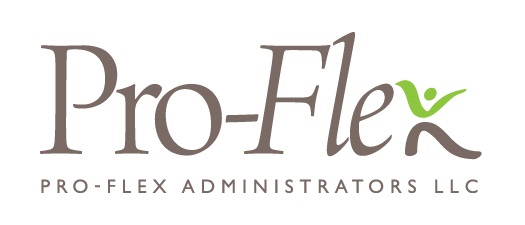August 2015
When you lead a workplace, there are so many factors to juggle – new hires, terminations, day-to-day operations, safety requirements – it’s easy to lose track. August’s Advisor keeps it simple, taking you through the history and purpose of OSHA and the basics of hiring for your culture. Keep the focus on culture with August’s HR Cast on maintaining a likeable workplace environment.
HR Alerts
Updates to FLSA White Collar Exemption Requirements Announced
Following a directive from President Obama, the Department of Labor has proposed changes to the federal Fair Labor Standards Act (FLSA) rules regarding the executive, professional, and administrative exemptions (also called the white collar exemptions). Under the proposed rule, the annual salary requirement for a white collar exempt employee would more than double to approximately $50,000. This more-than-doubling of the salary requirement would mean that approximately five million workers who are currently exempt from overtime and minimum wage requirements would no longer qualify for an exemption.
In addition to the white collar salary requirement increasing, the proposed rules call for the salary requirement for exempt highly compensated employees to increase from $100,000 to about $122,000 per year. Finally, the rules contain a mechanism by which both the white collar and highly compensated employee salary requirements will adjust annually.
Before these proposed rules can go into effect, there will be a notice and comment period, followed by time for the Department of Labor to review and respond to comments and draft final rules. The last time large revisions were made to the FLSA, in 2004, 13 months elapsed between the introduction of the proposed rules and the release of the final rules. As before, we expect a large number of comments and much opposition from the business sector, and therefore a similarly long span of time before the rules are finalized. While it will likely be mid-to-late 2016 or even early 2017 before any changes to the FLSA white collar exemptions go into effect, given the sizeable increase to the salary requirement, we recommend employers begin to consider how they will handle the new requirements in their organization.
An Overview of OSHA
On December 29, 1970, Richard Nixon signed the Occupational Safety and Health Act into law, calling it “probably one of the most important pieces of legislation” ever passed by Congress. In a nutshell, the Act says workplaces must be “free from recognized hazards that are causing or are likely to cause death or serious physical harm.”
These hazards were far from negligible. At the time, an estimated 14,000 workers were killed on the job every year. The Act created an administration agency under the U.S. Department of Labor—the Occupational Safety and Health Administration (OSHA). OSHA was tasked with setting and enforcing protective workplace safety and health standards, as well as providing information, training, outreach, and assistance to employers and workers.
Who Does OSHA Regulate?
OSHA has jurisdiction over most employers. The agency covers private sector employers and employees in all 50 states, the District of Columbia, and other U.S. jurisdictions. Some states have an OSHA-approved state program, which must be at least as stringent as the Federal OSHA program, handling coverage for that state.
What Does OSHA Do?
OSHA sets standards or rules employers must follow to protect their workers from hazards. These standards include requirements to provide fall protection, prevent exposure to some infectious diseases, ensure the safety of workers who enter confined spaces, prevent exposure to harmful substances, and install guards on machines.
OSHA enforces these rules by conducting inspections . When it finds violations, it may issue citations and fines and require prompt remediation. OSHA gave its first citation to a chemical company for exposing workers to mercury. Since then, the agency has noted nine million violations and issued 36 health standards. It currently regulates 470 substances. OSHA’s effect? Since the agency began, the daily fatal work injuries rate has dropped from 38 to 12 and work-related injuries and illnesses have decreased by 40%.
What Does OSHA Mean for Employers?
Under the Act, employers have the responsibility to provide a safe workplace. Employers must follow relevant OSHA safety and health standards, find and correct safety and health hazards, inform employees about workplace hazards, provide personal protective equipment where required, post OSHA materials, notify OSHA of fatalities or serious work-related injuries, keep accurate records of work-related injuries and illness, and refrain from retaliating against workers for exercising their rights under the Act, such as calling the agency about dangers in the workplace.
How Does OSHA Help Employers?
Fundamentally, OSHA helps employers by providing them with guidance and information that will reduce the risk of injury in the workplace; this is valuable both financially and as a way to keep employees – an organization’s most valuable asset – healthy and safe. Employers who would like to be proactive, or feel they may be in need of assistance with OSHA requirements, can request a free on-site consultation. OSHA provides this service for small businesses with no penalties or citations attached. OSHA also provides services through compliance assistance specialists, cooperative programs, and training and education materials.
Question & Answer
Q: Our employees often don’t turn their timesheets in on time. If an employee doesn’t submit his sheet on time, can we delay processing his paycheck until the next pay period?
A: It is the employer’s obligation to pay employees on the established payday regardless of whether a timecard has been submitted. There is no exception to the law that allows an employer to withhold payment until the timecard has been turned in. When you don’t have a timecard, you can comply with the law by paying all of the wages that you reasonably know are due for an employee’s regularly scheduled work period.
Normally, overtime pay earned in a particular workweek must also be paid on the regular pay day for the pay period in which the wages were earned. You may, however, delay payment for overtime wages that can’t be determined until after the regular pay period. The delayed payment of overtime wages earned in one payroll period must generally be no later than the payday for the next regular payroll period.
You can certainly discipline employees for failing to accurately record and report their time, particularly if you have a written policy and it has been a problem with an employee more than once, but holding the paycheck as a method to gain compliance could subject your company to significant liability in the form of a wage and hour claim.
Three Ways to Hire for Your Culture
Ever hire that remarkably experienced, impressively skilled employee who just doesn’t fit in with your company culture? It happens. You assumed the new hire shared your values and would adjust well to your workplace, but for one reason or another the employee blends in no better than a hammock in a conference hall .
What can you do to reduce the chances of a bad hire? Hire for your culture. Look for the candidates with the most applicable skills and most relevant experience, yes, but, more importantly, look for the candidates who want to put their knowledge and talents at the service of your mission . Skills and experience matter only if the person who has them contributes to the excellence of your organization.
Here are three strategies you can use to hire for your culture:
- Explain your company values and expectations. The interview process isn’t just about the applicants; it’s also about you and your organization. When discussing the requirements of the job, make sure you tell applicants about your organization – where it has been and where it is going. Be up front and concrete about what your company values are, how your company follows them, and how you expect every employee to exemplify those values. Mention the behaviors and habits you want to see in an employee. Ask applicants why they might want to work in your specific culture, and press them for specifics.
- Bring employees from various departments into the interview sessions. However well everyone at your company embraces the company culture, you’re not a monolith or merely a set of divided roles and responsibilities. Trite as it sounds, your organization is comprised of people – people with various backgrounds, expertise, and perspectives. Your employees have their own ways of participating in and contributing to the company culture. Take advantage of these differences by inviting employees from various departments to participate in the interviews. The more diverse your interviewers, the more likely you’ll be to spot a red flag before extending a job offer.
- Ask about specific behaviors. When questioning candidates and their references, ask about their preferred way of doing things – not just what they do, but also how they do it. Have applicants name the values that matter most to them and what they did in their previous jobs to live those values. Ask about large long-term projects and small day-to-day operations. You can often tell a lot about an applicant’s character by their disposition toward the menial but necessary tasks of an organization.
You can no more afford to make assumptions about an applicant’s fit with your culture than you can about their skills, expertise, and experience. You expect evidence of an applicant’s qualities and accomplishments; require evidence of a cultural fit as well. Make your hiring decisions as evidence-based as possible.
Tool of the Month:
Reduction in Force Decisional Matrix
Conducting a reduction in force is one of the most difficult tasks that HR managers and business leaders have to carry out, and choosing which positions to eliminate can seem impossible. Factors are listed and rated on a point system for ease of comparing skills and performance across employees. While this form won’t make the job any less painful, it is designed to at least make it a little easier.



